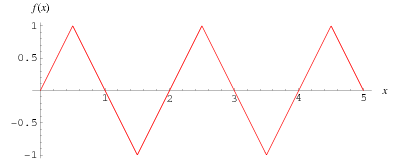I ran out of CBD oil caplets a few days ago, and decided not to restock just to see if I noticed a difference.
Today anxiety definitely made itself felt — I was very tempted to go home early from work. I’ve also felt more worn-out and slow to start in the last few mornings. But on the other hand, the trouble I’d been having with constipation also disappeared.
So I think I’ll get back on it but at a lower dosage, and see how that works.
I picked up an Elektron Analog Drive in a blowout sale. I was expecting a fairly normal-sized stompbox, but it’s a big metal box as tall and deep as the Microbrute, more than half as wide and twice as heavy.
It sounds pretty great with the Reface CS, lending its sound a lot more authority and/or face-melting screaminess, depending. If I wanted to do rock leads or organs that would be a pretty great setup. I don’t, but I’ve already put it to pretty good use turning chords into a variety of textures via intermodulation distortion.
One issue with the Reface though is a high noise floor. I’ve dealt with it on other recordings, but high gain settings on the Analog Drive really makes that noise stand out. I had a couple of ideas as to the cause, but someone suggested it might be picking up noise over the USB connection; if so there are isolators to fix that. I’ll give it a try.
Last weekend we got an estimate on removing our alarmingly wobbly deck and replacing it with concrete steps and a bit of fence, and the number was… much. It wasn’t itemized, which raises a red flag for me, and we’re going to get estimates from other contractors. But I suspect I’m going to put that computer replacement plan on hold for a bit. I don’t have to jump right into it as soon as the 3rd generation Ryzen chips hit the market. It could be smarter to wait for Black Friday/Cyber Monday/Consumption Season deals anyway.
Something else I am looking at from a bit of a distance is the Chase Bliss MOOD pedal. Like the Dark World, it’s a collaboration between other pedal designers, with two sides that “talk” to each other in various ways. Hainbach — who does nifty atmospheric stuff with small synths, old cassette recorders, MiniDisc players and retro test equipment — called his video on it “The Most Ambient Guitar Pedal.” But nobody is launching this one with a discounted price, so I’m going to hang on a bit and look for it used or discounted, or decide I don’t really need it.
Another one is Soma Labs Ether. It’s a small sensor/amplifier that picks up electromagnetic fields from various electrical/electronic devices, made especially for exploring urban environments. It’s very cool, but:
- It’s just an improvement on an induction coil gizmo I already have. Mine is passive and needs a lot of amplification just to catch signals leaking from nearby LCD screens, electric motors, light switches etc.
- While there are a variety of clicks, hums, buzzes, whines, rhythmic patterns etc. it picks up, they tend to have a similar character and I feel like the “language” would be exhausted pretty quickly, in a musical sense. It’s probably not something I would want to use in a lot of releases.
- (On the other hand, someone said their walk around a shopping mall with one was “the best ambient/drone gig I have been to in 2 years.”)
- One of those super-cheap radios meant to tune into broadcast TV audio is pretty great at plucking weird signals out of the air. Sometimes those signals are coming from the next continent over. I believe I should still have such a radio around here somewhere. Of course, broadcast signals and natural “sferics” are different from local EM fields, and the focus is much less on exploring one’s local neighborhood with a different sense.


